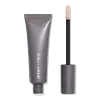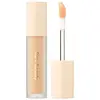What's inside
What's inside
 Key Ingredients
Key Ingredients

 Benefits
Benefits

 Concerns
Concerns

 Ingredients Side-by-side
Ingredients Side-by-side

Isododecane
EmollientMica
Cosmetic ColorantSilica
AbrasiveTrimethylsiloxysilicate
EmollientAluminum Starch Octenylsuccinate
AbsorbentDisteardimonium Hectorite
StabilisingTrihydroxystearin
Skin ConditioningPolyethylene
AbrasiveTriethylhexanoin
MaskingSorbitan Sesquioleate
EmulsifyingHydrogenated Polycyclopentadiene
Dimethicone
EmollientBis-Diglyceryl Polyacyladipate-2
EmollientAlthaea Officinalis Root Extract
Skin ConditioningWater
Skin ConditioningBrassica Campestris Seed Oil
Skin ConditioningEthylhexylglycerin
Skin ConditioningGlycine Soja Oil
EmollientGlycyrrhiza Glabra Root Extract
BleachingLecithin
EmollientOleic Acid
EmollientOryza Sativa Bran Extract
Skin ConditioningOryza Sativa Extract
AbsorbentOryza Sativa Germ Extract
EmollientPEG-40 Stearate
EmulsifyingPolyglyceryl-3 Diisostearate
EmulsifyingPropylene Carbonate
SolventSynthetic Beeswax
Emulsion StabilisingTerminalia Arjuna Extract
Skin ConditioningTocopherol
AntioxidantPhenoxyethanol
PreservativeCI 77163
Cosmetic ColorantIron Oxides
CI 77891
Cosmetic ColorantIsododecane, Mica, Silica, Trimethylsiloxysilicate, Aluminum Starch Octenylsuccinate, Disteardimonium Hectorite, Trihydroxystearin, Polyethylene, Triethylhexanoin, Sorbitan Sesquioleate, Hydrogenated Polycyclopentadiene, Dimethicone, Bis-Diglyceryl Polyacyladipate-2, Althaea Officinalis Root Extract, Water, Brassica Campestris Seed Oil, Ethylhexylglycerin, Glycine Soja Oil, Glycyrrhiza Glabra Root Extract, Lecithin, Oleic Acid, Oryza Sativa Bran Extract, Oryza Sativa Extract, Oryza Sativa Germ Extract, PEG-40 Stearate, Polyglyceryl-3 Diisostearate, Propylene Carbonate, Synthetic Beeswax, Terminalia Arjuna Extract, Tocopherol, Phenoxyethanol, CI 77163, Iron Oxides, CI 77891
Water
Skin ConditioningIsododecane
EmollientTalc
AbrasiveDimethicone
EmollientCetyl PEG/PPG-10/1 Dimethicone
EmulsifyingPolysilicone-11
Trimethylsiloxysilicate
EmollientGlycerin
HumectantPhenoxyethanol
PreservativeSodium Chloride
MaskingMagnesium Sulfate
Hydrogen Dimethicone
Sodium Dehydroacetate
PreservativeDisteardimonium Hectorite
StabilisingAluminum Hydroxide
EmollientBenzoic Acid
MaskingDehydroacetic Acid
PreservativeLaureth-12
EmulsifyingPropylene Carbonate
SolventEthylhexylglycerin
Skin ConditioningCI 77891
Cosmetic ColorantIron Oxides
Water, Isododecane, Talc, Dimethicone, Cetyl PEG/PPG-10/1 Dimethicone, Polysilicone-11, Trimethylsiloxysilicate, Glycerin, Phenoxyethanol, Sodium Chloride, Magnesium Sulfate, Hydrogen Dimethicone, Sodium Dehydroacetate, Disteardimonium Hectorite, Aluminum Hydroxide, Benzoic Acid, Dehydroacetic Acid, Laureth-12, Propylene Carbonate, Ethylhexylglycerin, CI 77891, Iron Oxides
Ingredients Explained
These ingredients are found in both products.
Ingredients higher up in an ingredient list are typically present in a larger amount.
Ci 77891 is a white pigment from Titanium dioxide. It is naturally found in minerals such as rutile and ilmenite.
It's main function is to add a white color to cosmetics. It can also be mixed with other colors to create different shades.
Ci 77891 is commonly found in sunscreens due to its ability to block UV rays.
Learn more about CI 77891Dimethicone is a type of synthetic silicone created from natural materials such as quartz.
What it does:
Dimethicone comes in different viscosities:
Depending on the viscosity, dimethicone has different properties.
Ingredients lists don't always show which type is used, so we recommend reaching out to the brand if you have questions about the viscosity.
This ingredient is unlikely to cause irritation because it does not get absorbed into skin. However, people with silicone allergies should be careful about using this ingredient.
Note: Dimethicone may contribute to pilling. This is because it is not oil or water soluble, so pilling may occur when layered with products. When mixed with heavy oils in a formula, the outcome is also quite greasy.
Learn more about DimethiconeDisteardimonium Hectorite comes from the clay mineral named hectorite. It is used to add thickness to a product.
It can also help stabilize a product by helping to disperse other ingredients.
Hectorite is a rare, white clay mineral.
Learn more about Disteardimonium HectoriteEthylhexylglycerin (we can't pronounce this either) is commonly used as a preservative and skin softener. It is derived from glyceryl.
You might see Ethylhexylglycerin often paired with other preservatives such as phenoxyethanol. Ethylhexylglycerin has been found to increase the effectiveness of these other preservatives.
Isododecane is a fragrance, emollient, and solvent.
As an emollient, it helps your skin stay soft and hydrated. Emollients help trap moisture into your skin.
Isododecane's role as a solvent makes it a great texture enhancer. It spreads smoothly on skin and does not leave a sticky feeling behind. Isododecane also helps prevent color transfer in makeup products.
Isododecane is not absorbed into skin.
Learn more about IsododecanePhenoxyethanol is a preservative that has germicide, antimicrobial, and aromatic properties. Studies show that phenoxyethanol can prevent microbial growth. By itself, it has a scent that is similar to that of a rose.
It's often used in formulations along with Caprylyl Glycol to preserve the shelf life of products.
This ingredient is a solvent. It helps dissolve active ingredients and alter the texture of products.
Propylene Carbonate is commonly used in makeup and with clay, such as montmorillonite or bentonite.
Studies show this ingredient to be safe for cosmetics. When it is undiluted, it can cause skin irritation. (It is always diluted in skincare and makeup). This ingredient is water-soluble.
Propylene Carbonate is created from propylene glycol and carbonic acid.
Learn more about Propylene CarbonateThis silicone is an emollient. Emollients create a thin film on the skin to prevent moisture from escaping.
It is not soluble in water and helps increase water-resistance in products.
According to a manufacturer, it can blend seamlessly with silicone oils, such as Cyclopentasiloxane.
Learn more about TrimethylsiloxysilicateWater. It's the most common cosmetic ingredient of all. You'll usually see it at the top of ingredient lists, meaning that it makes up the largest part of the product.
So why is it so popular? Water most often acts as a solvent - this means that it helps dissolve other ingredients into the formulation.
You'll also recognize water as that liquid we all need to stay alive. If you see this, drink a glass of water. Stay hydrated!
Learn more about WaterThis ingredient is a combination of red, black, and yellow iron oxide pigments. This combination of colors is usually found in foundation, because it results in a "skin" color.